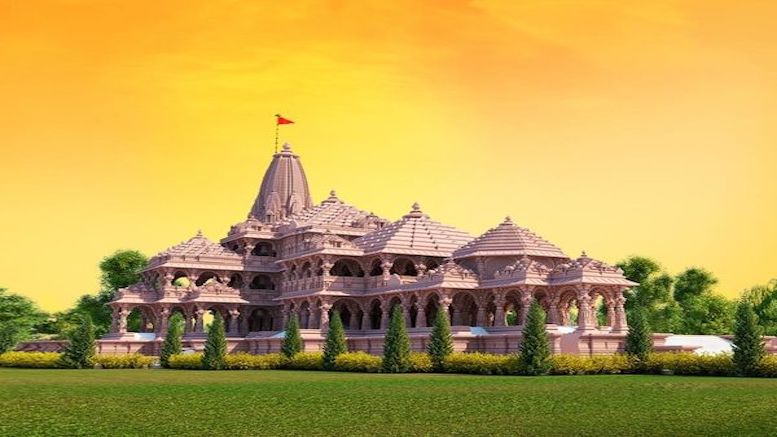In the heart of Ayodhya, a city steeped in the tapestry of ancient Indian mythology and history, the resonant echoes of cultural identity find their most profound expression in the majestic structure known as the Ram Mandir. Today, against the backdrop of a rapidly evolving world, the Ram Mandir stands not merely as a symbol of architectural splendor, but as a profound testament to the enduring spirit of unity, faith, and resilience. In an era where the currents of change swirl relentlessly, the resonance of the Ram Mandir echoes through time, bridging the ancient with the contemporary, and embodying the collective aspirations of a nation in search of its roots. This sacred edifice encapsulates not just bricks and mortar but encapsulates a narrative that intertwines the threads of history, spirituality, and cultural identity into a rich and vibrant tapestry that resonates deeply in the hearts of those who witness its towering presence.
Cultural Reverberations:
In the tapestry of Indian heritage, the Ramayana threads the profound narrative of dharma, devotion, and the perpetual clash between virtue and malevolence, echoing through time. Lord Ram’s fidelity to truth and the celestial victory of righteousness have intricately woven themselves into the very fabric of the Indian soul, and the Ram Mandir’s emergence stands as a poignant revival, bridging contemporary minds with the enduring values cradled in this ancient epic.
The architecture of the temple, inspired by ancient Indian design principles, serves as a visual representation of the synthesis of tradition and modernity. The intricate carvings and sculptures narrate the tales of the Ramayana, offering a cultural pilgrimage for devotees and art enthusiasts alike. This cultural resonance fosters a sense of identity and belonging among the people, irrespective of religious affiliations.
Social Cohesion:
The Ram Mandir initiative stands as a testament to the remarkable ability of people from varied backgrounds to unite, exemplifying a collective spirit that transcends religious and regional divides, turning our shared cultural heritage into a powerful force for unity and social cohesion.
Moreover, the project’s embrace of diversity, engaging individuals from diverse backgrounds, resonates as a compelling testament to unity, conveying a joint dedication to safeguarding and honoring the rich cultural tapestry that has intricately woven the communal spirit of Indian civilization. This inclusive harmony transcends religious boundaries, fostering a social tapestry that is not only interconnected but also weaves a narrative of seamless integration.
Political Implications:
The establishment of the Ram Mandir has reverberated through the political fabric of modern India, fundamentally influencing the narrative and dynamics within the country. The resolution of the Ayodhya dispute and the subsequent initiation of temple construction represent a pivotal moment in India’s political terrain. Diverse perspectives have emerged, with some perceiving it as an embodiment of the government’s dedication to cultural and religious aspirations, while others express apprehensions about the potential for heightened polarization.
The geopolitical significance of the Ram Mandir transcends national borders, shaping India’s international image and diplomatic ties, as events surrounding its construction contribute to the global narrative on secularism and religious harmony.
Also read – Ayodhya’s Role in Hindu Mythology: Unraveling the Connection Between Ayodhya and Lord Ram’s Epic Tale
Economic Impact:
The establishment of the Ram Mandir not only catalyzed economic activities in the vicinity, opening doors to employment and nurturing local development but also attracted a surge of pilgrims and tourists to Ayodhya, propelling the regional economy and fostering opportunities for small enterprises and aspiring entrepreneurs. Simultaneously, the construction process itself served as a catalyst for employment, breathing life into the local workforce.
Moreover, the far-reaching economic reverberations stretch past the nearby areas, shaping the landscape of cultural tourism in India. The escalating eminence of the Ram Mandir as both a cultural and religious symbol not only mesmerizes audiences on a national and global scale but also contributes substantially to elevating India’s worldwide standing as a stronghold of cultural and historical eminence. This compelling trend not only burnishes India’s global image but also acts as a potent catalyst for tourism, reinforcing the bedrock of the nation’s economic prowess.
Conclusion:
In the tapestry of contemporary India, the resonance of ram mandir resonates across cultural, social, political, and economic realms, serving as a symbolic nexus between the historical roots and the dynamic present. As this sacred structure finds its place in the nation’s landscape, it not only shapes political dialogues but also nurtures societal unity and fosters avenues for economic progress. In essence, the Ram Mandir emerges as a timeless emblem, embodying the harmonious coexistence of tradition and modernity, seamlessly blending cultural identity with the diverse aspirations of a vibrant society. In the unfolding chapters of India’s narrative, the evolving resonance of the Ram Mandir is poised to intricately weave itself into the ever-changing fabric of the country’s cultural and social narrative.
Also read – Vaishno Devi Yatra Travel Tips
